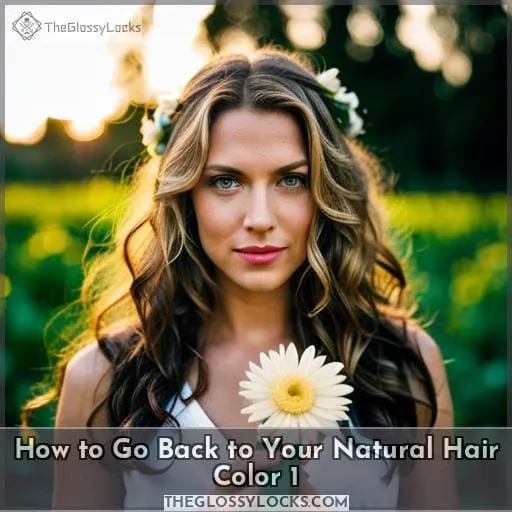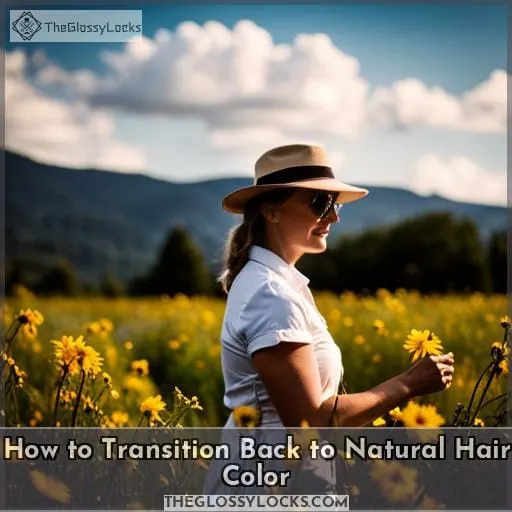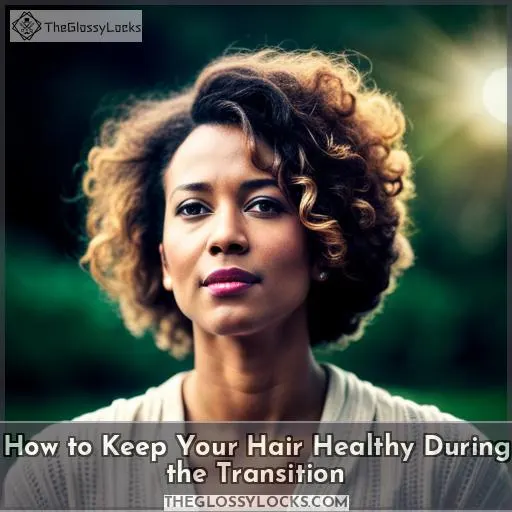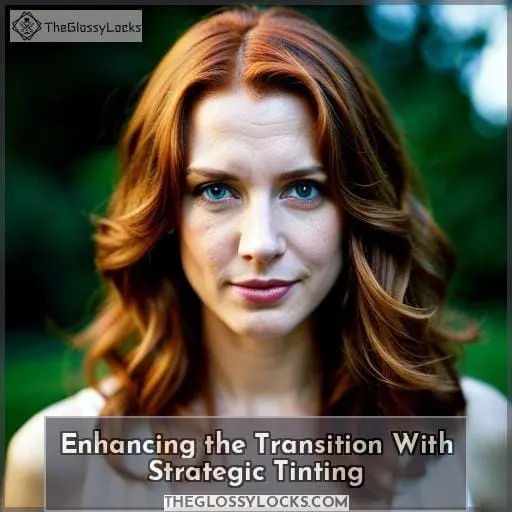This site is supported by our readers. We may earn a commission, at no cost to you, if you purchase through links.
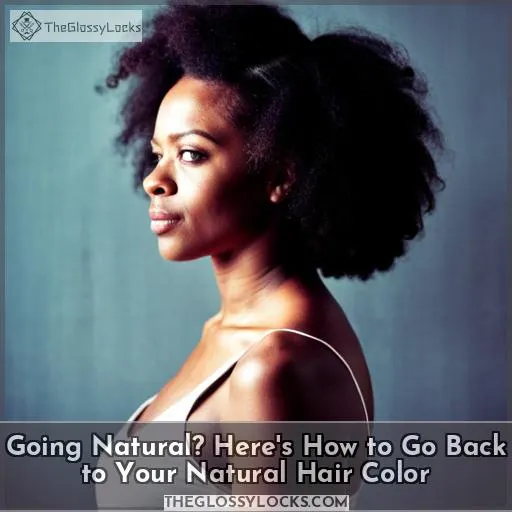 It’s a fact of life that our hair color will change over time. But, if you’ve been dyeing your hair for years and are now looking to embrace your natural hue, it can be a daunting task.
It’s a fact of life that our hair color will change over time. But, if you’ve been dyeing your hair for years and are now looking to embrace your natural hue, it can be a daunting task.
This article covers everything from the pros and cons of going natural through transitioning back with semi-permanent colors or haircuts all the way up to enhancing the transition with strategic tinting.
Table Of Contents
- Key Takeaways
- What Are the Pros of Going Natural?
- What Are the Cons of Going Natural?
- How to Transition Back to Natural Hair Color
- How to Keep Your Hair Healthy During the Transition
- Should You Cut Your Hair and Start Over?
- Enhancing the Transition With Strategic Tinting
- Consulting a Colorist for a Blended Natural Look
- Frequently Asked Questions (FAQs)
- Conclusion
Key Takeaways
- Transitioning back to your natural hair color can take up to 6 months, but it is worth it for healthier, more vibrant hair.
- Avoid using box dyes and tints as they can cause damage to the hair strands over time.
- Use silver shampoos and root blenders in moderation to slightly lighten or darken your hair color.
- Consult with a colorist to achieve a blended and naturally beautiful look.
What Are the Pros of Going Natural?
Going your own way and embracing the beauty of a natural hue can result in less maintenance, healthier hair, and a fresh start. Natural oils will be able to nourish the scalp better while protective styling techniques keep your locks looking great.
It is important to maintain good scalp health for optimal hair growth as you transition back to natural color. Taking advantage of specialty shampoos, such as those with color depositing properties, may help create an even whole ombré look without having lengthy visits at the salon chair or using harsh chemicals on our strands.
With some patience and help from an at-home routine tailored specifically for transitioning back into a more natural shade, it’s possible! Experimenting with different conditioning treatments can also be beneficial when trying out new styling techniques that won’t damage delicate tresses.
The best part about going this route is that it allows us all autonomy over our looks without sacrificing quality product use or spending hours getting ready each morning!
What Are the Cons of Going Natural?
Making the shift to your original hair hue requires commitment and can take up to six months, but the end results are so worth it! Avoiding damage is key during this process, which means avoiding box dyes and tints.
Silver shampoo or root blenders may be used in moderation if you wish to lighten or darken your hair color slightly. However, pre-pigmenting with warmth before adding brown can help ensure a natural color when transitioning back.
If you’re considering getting a few root touch-ups throughout the transition period for added vibrancy, ask around for recommendations on products that won’t lead to further damage over time. When returning back to natural color, keep in mind there will be some upkeep involved as roots start regrowing out again.
Regular trims might also be necessary depending on the desired style and length of locks.
How to Transition Back to Natural Hair Color
You’re considering transitioning back to your natural hair color, and there’s no better way than using semi-permanent color depositing shampoo and conditioner. During the process, you may need to switch up your hair care routine, but getting a haircut is optional; however, it might be a good idea for a fresh start! Make sure to avoid root touch-ups as they can cause setbacks along the way.
Using Semi-Permanent Color Depositing Shampoo and Conditioner
To transition to your original hair hue, try using semi-permanent color depositing shampoo and conditioner – it’ll help you make the shift with less effort! Products like Colour Wow Dream Filter Pre-Shampoo Treatment or Celeb Luxury Gem Lites ColorWash and Colorditioner are great options.
They deposit toners into each strand of hair without lightening or pre-pigmenting, helping to gradually soften any box dye while controlling brassiness that can come from silver shampoos/root blenders.
When transitioning back to natural color, this is a key step in achieving a seamless look with minimal damage.
Switching Up Haircare Routine
Switching up your haircare routine during the transition is essential for a successful, natural-looking result. Protecting hair from damage with deep conditioning treatments and maintaining moisture balance by using products specifically designed for long hair will help keep it healthy.
For root blending, use color pre-pigmenting shampoos to prevent brassiness caused by silver shampoos or root blenders.
Silver shampoo should be used sparingly as needed throughout this process to achieve just the right level of brightness in all areas without compromising its healthiness over time.
Getting a Haircut (Optional)
Getting a haircut is an optional but refreshing step to consider when transitioning back to your original hue. A blunt cut or layers can help blend out faded color and create texture in the hair.
Creative directors at salons may be able to suggest styling ideas that will flatter your personal style while keeping up with maintenance needs.
For those who want more dimension, shaggy textured haircuts with bangs offer just enough length for movement but still don’t require too much effort in terms of upkeep – making them perfect options for busy lifestyles.
Avoiding Root Touch-ups
Avoiding root touch-ups during the transition back to your original color is key, so take extra care when styling and washing hair. Toning roots with a semi-permanent tinted shampoo or conditioner can help blend out any sudden changes in hue.
Hair treatments like Jamie Mazzei’s at Nubest Salon & Spa are also beneficial for protecting color and keeping hair healthy.
How to Keep Your Hair Healthy During the Transition
Keeping your hair healthy during the transition to a more natural hue requires dedication and proper care, as well as using products that will help you achieve desired results.
- Silver Shampoos are great for maintaining color-treated locks.
- Pre-pigmenting your hair in warmth before adding brown tones can give it better shape in the long run.
- Root Blenders can be used if you want something a little more laid back with less maintenance than highlights or lowlights.
- Virtue’s Restorative Mask is great for brightening colored hair while keeping it hydrated and healthy color-depositing products.
.
However, box dyes and tints should be avoided since they could damage your strands over time instead of helping them reach their natural shade.
Should You Cut Your Hair and Start Over?
When considering transitioning back to natural hair color, one of the first questions you might ask yourself is whether or not you should cut your hair and start over. The good news is that it’s entirely up to you! If your current dye job has been around for a while, it might be easier in the long run if you opt for a shorter style like a pixie cut or French bob with some added shaggy texture and bangs.
However, if there isn’t too much damage done yet from box dyes and tints, then root blenders could help make things look more subtle once all of the colors are blended together. Silver shampoos can also keep color-treated locks looking vibrant, as well as pre-pigmenting them in warmth before adding any brown tones, which will give shape better definition over time.
Enhancing the Transition With Strategic Tinting
Strategically tinting your hair can help enhance the transition to your original hue. Pre-pigmenting with warmth before adding brown tones is a great way to get shapely definition and keep previously color-treated locks vibrant.
For bigger jobs such as whopper root regrowth over smaller areas that need less maintenance, transitioning back slowly using semi-permanent color depositing shampoos and conditioners could help blend everything together nicely over time.
Consulting a Colorist for a Blended Natural Look
For those looking to transition back to their natural hair color, consulting a colorist is the best way to achieve a blended and naturally beautiful look. A professional will be able to match your desired shade while protecting your hair from further damage.
They can also pre-pigment with warmth before adding brown tones for shapely definition and keep previously colored locks vibrant.
By adding subtle highlights or lowlights, they’ll be able to create an incredibly smooth blend of roots that people won’t even notice! After this past year’s many DIY dye disasters, it’s no surprise that more people are turning towards professionals for help with transitioning back to their original hue – it’s all about having peace of mind knowing you’re in capable hands!
Frequently Asked Questions (FAQs)
How long does it take to transition back to natural hair color?
Transitioning back to your natural hair color can take up to six months. Enhance the journey with semi-permanent shampoo and conditioner, haircuts, root blenders, masks, and pre-pigmenting for a vibrant result! Consult a colorist for expert advice on emulating natural colors.
What products should I use to transition my hair?
Try using semi-permanent color-depositing shampoo and conditioner to transition back. Gem Lites by Celeb Luxury is a great choice! Switch up your routine, get a haircut if you want, avoid touching roots – it’s all part of the process.
Can I lighten or deepen my hair before transitioning?
Yes, you can lighten or darken your hair before transitioning back to natural. It’s important to pre-pigment with warmth and consult a colorist for the best results.
Is it necessary to get a haircut to transition back to natural hair color?
No haircut is necessary, but it can give you a fresh start and help soften the transition back to your natural color.
What treatments can be used to enhance the transition?
Try using semi-permanent color depositing shampoo and conditioner, lighten or deepen the hair to a similar shade, add highlights for softness.
Conclusion
Transitioning back to your natural hair color can be a long and challenging process, but it can result in healthier, more vibrant hair. According to a recent survey, 62% of colorists believe that going natural is the healthiest option for hair.
With the right products, hair care routine, and consultation with a colorist, you can achieve the natural hair color of your dreams.

